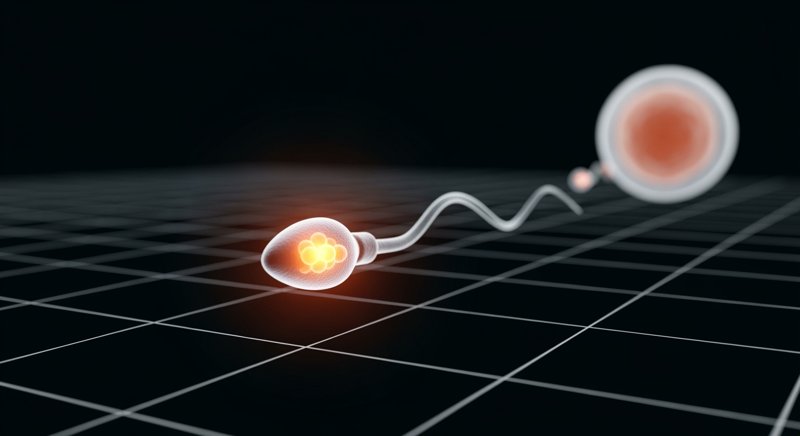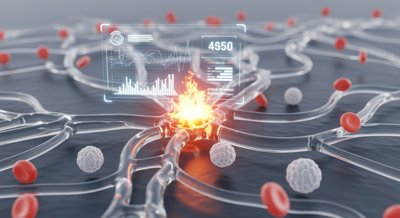👶 The Father's Fingerprint: A Man's Guide to Epigenetics and Preconception Health

For generations, the conversation around preparing for pregnancy has focused almost exclusively on the woman. But a revolution in our understanding of genetics and reproductive health is shifting that paradigm. We now know that a man’s health in the months before conception plays a profound and lasting role in the health of his child. This isn’t just about fertility; it’s about the science of epigenetics—the discovery that a father’s lifestyle can leave a literal fingerprint on the genes he passes down.
The old notion that a man’s contribution is limited to a single moment is being replaced by a new, more empowering truth: fatherhood begins long before conception. The health of a child is a shared responsibility, and the “male factor” accounts for up to 50% of infertility cases.
This guide is a deep dive into the science of male preconception health, a roadmap for the conscious, modern man who wants to give his future child the healthiest possible start in life.
The 90-Day Upgrade: Why Three Months Matters
The journey of a sperm cell, from its creation to maturity, takes about 72-90 days. This three-month window is a period of incredible opportunity. During this time, your lifestyle choices—your diet, exercise, stress levels, and exposure to toxins—are actively shaping the quality of the genetic material you will one day pass on.
Think of it as a biological upgrade. The choices you make in this critical window can:
- Improve Sperm Quality: Increasing the number, motility (swimming ability), and morphology (shape) of your sperm.
- Protect DNA Integrity: Reducing the risk of DNA fragmentation, which can lead to miscarriage and developmental issues.
- Optimize Epigenetic Programming: Influencing which of your child’s genes are switched on or off, with lifelong implications for their health.
The Science of the Father’s Fingerprint: An Introduction to Epigenetics
Epigenetics is the science of how your behaviors and environment can cause changes that affect the way your genes work. While you can’t change your DNA sequence, you can change its “packaging.” Lifestyle factors can attach or remove tiny chemical tags to your DNA, which act like dimmer switches, turning genes up or down.
Recent studies have shown that a father’s preconception stress, diet, and body weight can alter the epigenetic patterns in his sperm. These altered patterns can be passed on to his offspring, influencing their risk for chronic diseases like diabetes, obesity, and even their mental health. This is a profound realization: your health today is a legacy you are preparing for the next generation.
The Preconception Checklist: An Evidence-Based Action Plan
Step 1: The Foundational Cleanup (Start 3-6 Months Before Conception)
This is about removing the toxins that are known to damage sperm and their precious genetic cargo.
- Eliminate Alcohol: There is no “safe” dose of alcohol for sperm health. Ethanol is a direct toxin to the cells that produce sperm and can lower testosterone levels. The recommendation is complete abstinence for at least three months.
- Cease All Smoking: This includes cigarettes, vapes, and cannabis. The toxins in smoke cause massive oxidative stress, which damages sperm DNA and reduces motility.
- Mind the Heat: The testicles are located outside the body for a reason: sperm production requires a temperature slightly cooler than the rest of the body. Avoid hot tubs, saunas, heated car seats, and prolonged periods with a laptop on your lap.
Step 2: The Clinical Check-In (3 Months Before Conception)
A visit to a urologist or andrologist is not a sign of a problem; it’s a proactive step for optimization. A preconception check-up should include:
- Semen Analysis: This is the cornerstone of male fertility testing, evaluating sperm count, motility, and morphology.
- Hormone Panel: Checking levels of testosterone, FSH, and LH can reveal underlying hormonal imbalances that can affect fertility.
- General Health Screening: A comprehensive blood test can identify and address any underlying conditions like diabetes or thyroid issues that could impact reproductive health.
- STI Screening: Many sexually transmitted infections can be asymptomatic but cause inflammation that damages sperm.
Step 3: The Nutritional Tune-Up
Your diet is the raw material for building the next generation. Focus on a whole-foods, anti-inflammatory diet rich in the following sperm-supercharging nutrients:
- Antioxidants: Protect sperm from oxidative stress. Find them in colorful fruits and vegetables, nuts, and seeds. Key players include Vitamin C, Vitamin E, Selenium, and Coenzyme Q10.
- Zinc: Essential for testosterone production and sperm formation. Found in oysters, beef, pumpkin seeds, and lentils.
- Folate (Vitamin B9): Yes, men need it too! It’s crucial for DNA synthesis and has been shown to reduce the rate of chromosomal abnormalities in sperm. Found in leafy greens, lentils, and avocado.
- Omega-3 Fatty Acids: Critical for the fluidity of the sperm membrane. Found in fatty fish like salmon and sardines, as well as walnuts and flaxseeds.
Step 4: The Lifestyle Optimization
- Manage Weight: Obesity can disrupt hormone balance and is linked to poorer sperm quality and adverse epigenetic changes.
- Move Your Body: Moderate, regular exercise improves blood flow, reduces stress, and helps maintain a healthy weight. Aim for 3-5 sessions per week, but avoid excessive, high-intensity training, which can be a stressor on the body.
- Prioritize Sleep: Aim for 7-9 hours of quality sleep per night. Sleep is when your body repairs itself and regulates hormones, including testosterone.
- Manage Stress: Chronic stress floods the body with cortisol, a hormone that can suppress testosterone production. Incorporate stress-management practices like meditation, deep breathing, or spending time in nature.
A New Vision of Fatherhood
Preparing for conception is one of the most profound and proactive acts of love a man can undertake for his future child. It’s a shift in perspective, from seeing fatherhood as a role that begins at birth to understanding it as a biological and emotional commitment that starts long before.
By taking these conscious, evidence-based steps, you are not just increasing the chances of conception; you are helping to write a story of health and vitality for the next generation. You are leaving a positive fingerprint on the future.




